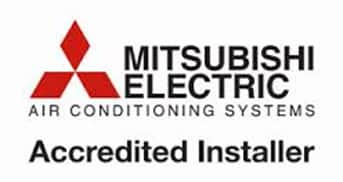Do you know if the air in your home is as clean and healthy as possible? Indoor air quality greatly affects our health and can have a significant impact on how comfortable people are when living inside. Poor air quality can cause respiratory concerns, allergies, headaches, and other physical ailments. Fortunately, it doesn’t take much to test the indoor air quality in your home and make the necessary improvements for a healthier environment. In this blog post, we will discuss practical ways to boost your indoor air quality by testing for contaminants and will provide recommendations for methods that can help restore an optimal level of comfort.
Understand the different types of air pollutants and their health effects
Clean air in the home is an essential part of staying healthy, but some environments may be plagued by dangerous air pollutants that can have lasting effects on their inhabitants. There are a variety of different types of air pollutants, all of which can have potentially severe health implications, from respiratory problems to more serious conditions such as cancer. Common pollutants include particulates such as dust and pollen, carbon monoxide, and nitrogen dioxide. Each has its own unique set of health risks and it is important to understand these to minimise the chances of coming into contact with them. To ensure clean air in the home it’s best to take measures to reduce the likelihood of coming into contact with these pollutants by addressing poor insulation or inadequate ventilation in the home.
Check for sources of indoor air pollution
To ensure clean air, check regularly for sources of indoor air pollution such as gas stoves, fireplaces, and mould. Gas stoves emit high levels of nitrogen dioxide and sulphur dioxide into the air so testing them periodically is a must. On the other hand, fireplaces can generate creosote deposits over time which can lead to a dangerous backup of smoke if not checked. Lastly, mouldy areas can release mycotoxins into the air which also need to be monitored and removed as soon as possible to prevent any potential harm from occurring from breathing in these toxins. Therefore, it is necessary to keep checking for sources of indoor pollution to guarantee clean air within your home.
Invest in air quality testing kits to monitor airborne particles
As indoor air pollutants can be a mixture of both indoor and outdoor pollutants, heavy indoor traffic, pest droppings and dust can all lead to poor air quality. Air testing kits enable homeowners to identify indoor air contaminants quickly and easily by detecting airborne particles such as mould spores, chemicals, and pollen. With an indoor air tester, homeowners can gain a better understanding of their indoor environment and can take preventative measures to ensure better indoor air quality. Testing the indoor air reduces the risks of allergy-related illnesses, asthma attacks and other respiratory conditions that arise from bad indoor air quality. Investing in an indoor air testing kit is the best way to support healthier indoor living conditions that everyone in the house can benefit from.
Take steps to reduce or eliminate potential sources of pollution
Start by identifying sources such as fireplaces, furnaces, second-hand smoke, and household chemicals. Suggested measures to reduce indoor air pollution include limiting the use of unvented space heaters and woodburning stoves, vacuuming carpets regularly with a vacuum cleaner equipped with a top quality filter, avoiding spraying pesticides and cleaning products inside, properly maintaining central heating systems, and routinely replacing furnace filters. Furthermore, ensure there is suitable ventilation by cracking a window on cold days to allow clean outdoor air into your house. Taking active steps now can help ensure clean air inside so you can breathe easier.
Use natural methods to purify the air
One way to keep your air clean is by utilising natural methods like houseplants or an essential oil diffuser. Houseplants are a great asset to have as they absorb toxins from the air, removing pollutants that can activate allergies. Additionally, essential oils can help cleanse the air through their antibacterial properties when used in an oil diffuser. Rich with a variety of flavours and fragrances, having one of these devices in your home can give you clean air while also adding great decorative appeal. So why not reap all the benefits clean air has to offer and start implementing natural purification into your home today?
Consider investing in a high-efficiency air purifier for your home
Investing in a high-efficiency air purifier can be a great way to clean the air in your home. It will reduce the number of allergens and pollutants present and make your indoor air cleaner for everyone to breathe. Not only will this improve the quality of life for anyone with allergies, but those with asthma and other respiratory issues will also enjoy being able to breathe clean, rejuvenating air all year round. Plus, since many newer models are highly efficient and have adjustable settings, you can rest assured knowing you’re investing in something that’s good for you both now and in the future. By purifying the air at home, you’re taking another step toward creating a healthier environment that is fit for you and your family!
Indoor air quality – The key points
Poor air quality can be devastating to your health, so it’s important to take measures to reduce exposure to air pollutants. By understanding the types of air pollution, checking for sources of indoor air pollution, investing in air testing kits, and taking steps to reduce potential in-home sources of air pollution, you can help create a healthier home environment. The most important thing is creating an environment free from potentially hazardous pollutants. If you need any more advice on improving your air quality or tips on which products may be best for your home contact JP Air Conditioning for assistance.



